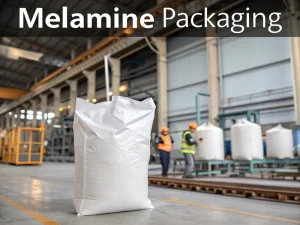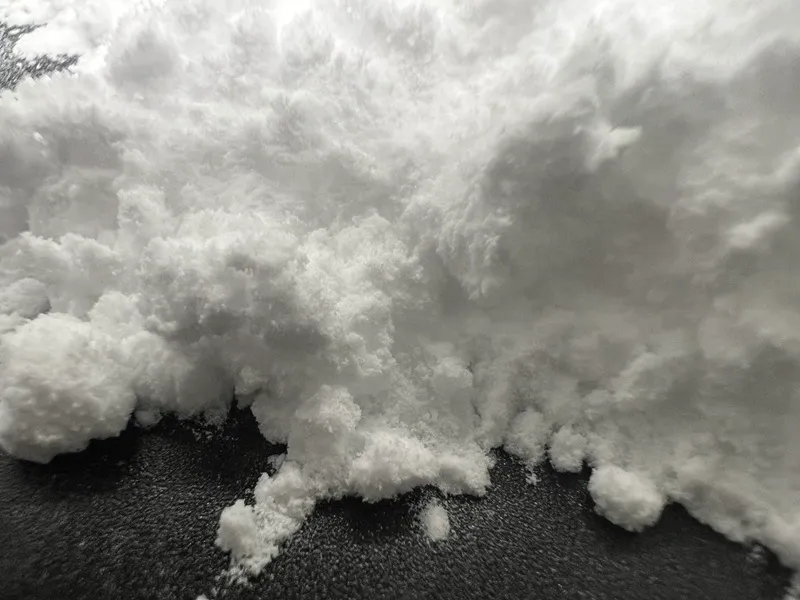
Melamine Packaging
Tech Blog Melamine packaging For manufacturers, inaccurate packaging not only fails to meet national standards but also increases labor costs and the risk of product

Melamine powder is a versatile and widely used raw material in numerous industries, from the production of resins and plastics to coatings and adhesives. Among its various physical properties, particle size stands out as a crucial factor that exerts a profound influence on the quality of the final products. This article delves deep into how melamine powder particle size can shape the performance, characteristics, and overall quality of different products.

In the synthesis of melamine formaldehyde resins, the particle size of melamine powder plays a pivotal role. Smaller particles offer a larger surface area for chemical reactions. When melamine reacts with formaldehyde, a higher surface-to-volume ratio allows for more efficient collisions between the reactant molecules. As a result, the reaction rate is significantly enhanced. For instance, in the production of thermosetting melamine-formaldehyde resins used in electrical insulation materials, smaller melamine powder particles can lead to a more rapid and complete polymerization process. This not only shortens the production cycle but also results in a more uniform resin structure with a higher cross-linking density.
The cross-linking density of the resin is directly related to the particle size of melamine. Larger particles may not be able to participate in the cross-linking reaction as effectively as smaller ones. A non-uniform cross-linking density can lead to products with inconsistent mechanical and thermal properties. In contrast, smaller melamine particles can ensure a more homogeneous cross-linking network. In the case of laminates made from melamine-formaldehyde resins, a higher cross-linking density due to smaller melamine particles provides enhanced hardness, heat resistance, and chemical resistance. This is especially important for applications where the laminate needs to withstand harsh environments, such as kitchen countertops or industrial work surfaces.
Suppose the particle size of melamine powder is not properly controlled. In that case, it can lead to various defects in resin-based products. For example, suppose there are large particles in the melamine. In that case, they may not fully dissolve or react during the resin synthesis process. These unreacted large particles can cause voids or inhomogeneities in the final resin product. In the case of coatings, such inhomogeneities can lead to surface roughness, reduced adhesion, and poor gloss. In plastic products, these defects can weaken the mechanical strength and compromise the integrity of the material.
In the coating industry, melamine powder is often used as a cross-linking agent in coatings formulations. The particle size of melamine powder has a direct impact on the film-forming process. Smaller melamine particles can disperse more uniformly in the coating matrix. When the coating is applied and cured, these well-dispersed particles can form a more continuous and uniform film. This is essential for achieving good adhesion to the substrate. A uniform film ensures that the coating can effectively protect the substrate from corrosion, abrasion, and environmental factors.
For example, in automotive coatings, a smooth and well-adhered film is crucial for both the aesthetic appearance and the long-term durability of the vehicle. Melamine with a suitable small particle size can help create a coating film that not only provides a high-gloss finish but also offers excellent resistance to scratches and weathering. In contrast, larger melamine powder particles may cause uneven film formation, resulting in areas of weak adhesion and reduced protection.
The particle size of melamine powder also affects the optical properties of coatings. Smaller particles are less likely to scatter light, which is beneficial for achieving high-gloss and transparent coatings.
In clear coatings for wood finishes, the use of melamine powder with small particles can enhance the natural beauty of the wood by providing a clear and glossy finish. In industrial coatings, high-gloss coatings are often desired for their aesthetic appeal and ease of cleaning.
The ability to control the particle size of melamine powder allows manufacturers to optimize the gloss and transparency of coatings to meet the specific requirements of different applications.
In adhesive applications, melamine powder is used to improve the performance of adhesives, especially in terms of heat resistance and chemical resistance. The particle size of melamine powder can influence the bond strength between the adhesive and the substrates. Smaller melamine powder particles can better disperse in the adhesive matrix, allowing for a more uniform distribution of cross-linking sites. This results in a stronger and more durable bond between the two surfaces being joined.
For example, in the bonding of wood products, an adhesive with melamine powder of appropriate particle size can provide a strong bond that can withstand moisture, temperature changes, and mechanical stress. In the construction industry, where adhesives are used for various applications, such as joining building materials, the bond strength is crucial for the structural integrity of the building. Melamine-based adhesives with well-sized melamine powder particles can ensure a reliable and long-lasting bond.
The particle size of melamine powder can also affect the rheological properties of adhesives. Larger particles may increase the viscosity of the adhesive, making it difficult to apply evenly. In contrast, smaller particles can help in maintaining a suitable viscosity for easy application. This is important for ensuring that the adhesive can be spread uniformly over the substrate surface, which in turn affects the bond quality.
For example, in the production of pressure-sensitive adhesives, the rheological properties need to be carefully controlled to ensure proper adhesion and release characteristics. The particle size of melamine powder can play a significant role in achieving the desired rheological properties.
In summary, the particle size of melamine powder is a critical factor that has far-reaching implications for the quality of products in various industries. Whether it is in the synthesis of resins, the formulation of coatings, or the production of adhesives, controlling the particle size of melamine powder can lead to products with enhanced performance, better physical properties, and fewer defects.
Manufacturers need to pay close attention to the particle size of melamine powder during the production process to ensure that they can meet the high-quality standards demanded by the market.
As a melamine factory, we offer a wider range of mesh options. If you need them, please contact us!

Tech Blog Melamine packaging For manufacturers, inaccurate packaging not only fails to meet national standards but also increases labor costs and the risk of product

Tech Blog How to Detect Melamine in Textiles? Melamine powder, a nitrogen-containing heterocyclic compound, is widely used in flame-retardant textiles and plastic products due to

Tech Blog melamine from urea Melamine is well-known for its wide range of applications, but its raw material for production is surprisingly urea. For manufacturers,

JINGJIANG MELAMINE POWDER
© JINJIANG MELAMINE